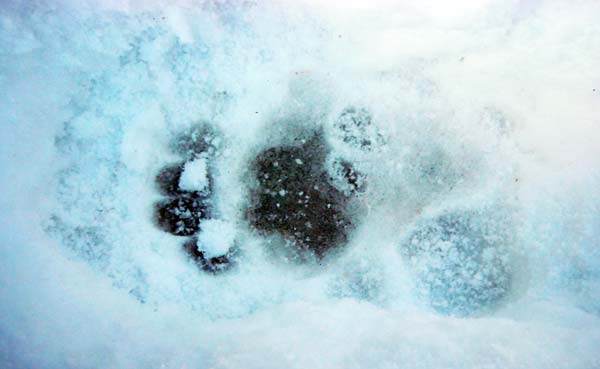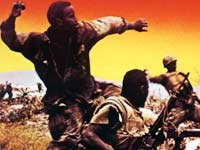First
Another CollegeHumor original vid, which came “First”:
Another CollegeHumor original vid, which came “First”:
Aviary’s Myna is a new web tool for editing-layering-mixing audio, all via their website; ie, you don’t need an application, you just need a web browser. Fellow radio producer Brad Linder reviews it at Download Squad:
Aviary launched an online audio editing application called Myna, and its all kinds of awesome. Dont get me wrong, its not exactly Pro Tools or Adobe Audition and it doesnt come with all the audio effects you would expect from those applications. But heres what it does and does well: It lets you create and edit multitrack audio recordings using a Flash-based web interface thats so natural to use you would swear it was a desktop application.
—“Aviary Myna: The best web-based audio editor yet”

Write plump checks asap — or perish — payable to The Social Media Guru:
“I bore of your analog attitude.” Vid by Markham Nolan using the new Xtranormal | Text-to-Movie tool.
via DigiDave.
For the next few weeks, Amazon and Mojo Nixon are offering MP3 downloads of the the entire Mojo catalog for FREEEeee. Don’t know why, but do know it’s time to d/l some Mojo.
Your collection just ain’t complete w/o at least “Jesus at McDonalds” and “Elvis is Everywhere.”
via Boing Boing.
Edward Tufte’s praise and crit of iPhone rez, w/ phrases like: “computer administrative debris”, “chartoon”, “content/information is interface”, “in a land of cluncky cellphone interfaces”. Had to transcribe this GUI gem:
“To clarify, add detail. Clutter and overload are not an attribute of information, they are failures of design. If the information is in chaos, don’t start throwing out information; instead, fix the design.”
iPhone Resolution by Edward Tufte
His improved weather visualizations at end of vid are exceptional; see discussion at The 404 Blog Getting Tough on Tufte. More E.T. at: iPhone interface design.
Edward Tufte: site | tube | sparklines | wavefields
David Brynes likes bikes, and has a new book about it, Bicycle Diaires.
His music tour travels with a few folding bikes, and the crew pedals around the world’s towns where they’re playing. Here’s the NPR interview, and book excerpt, “David Byrne’s Wild Wild (Biking) Life” (9:31 mp3):
Multi-D infographics potential from the Edward Tufte (statistician, sculptor, designer) podcast…
Edward Tufte: Wavefields
Ask E.T. “Wavefields: intense animated data graphicsâ€:
“Wavefields” are data graphics that draw on and completely fill the entire display surface, using every pixel on the data plane to show high-resolution, complex, multiple, animated statistical data-flows. Wavefields extend my work on sparklines.…
As the metaphor for sparklines is the resolution of typography, the metaphor for wavefields is the HD video, which records approximately 1 gigabyte per minute, a data throughput that might finally make our statistical graphics worthy of the powers of the human eye-brain system.
—
[Note that E.T. leaves out “ear” from the “human eye-brain system” — his audio reflects his sonic neglect.]
More on Infographics:
Cool Infographics blog
Flickr Info Graphics Pool
Smashing Magazine Data Visualization and Infographics
Edward Tufte: site | tube
Q (at dawn): Why was my dog backing like crazy early this morn?
A (after sunrise): Bear in backyard, prints all over neighborhood&heliip;

 Just found out about the Lucky Dragons: sound-tech-music-visual collage artists. Lotsa listening and downloads of LD trax at the Free Music Archive and their site: Lukey Dargons (LD = Luke Fischbeck and Sarah Rara).
Just found out about the Lucky Dragons: sound-tech-music-visual collage artists. Lotsa listening and downloads of LD trax at the Free Music Archive and their site: Lukey Dargons (LD = Luke Fischbeck and Sarah Rara).
Here’s some scales off the Lucky Dragons…
A nice string thing, “Home” (0:58 mp3):
Street sounds with sweet vocals, the first track off the Dark Falcon album, “heartbreaker” (2:06 mp3):
One of their “audio reconstructions and rearrangements of field recordings from 4 anti-war protests” on hawks and sparrows, “track 7” (3:00 mp3):
And this Fader TV report, on an LD audio-invention, starts slow but gets good, so stick with:
LD links: site | space | shop/ | tube | blog | fma
via Some Velvet Blog.
Welcome to Soundville, a Sony audio performance project:
In March 2009 a small town in Iceland was filled with speakers. The Seydisfjordur village was turned into an extraordinary sound-system for a week. Sounds by Richard Fearless ( Death in Vegas ) Mum, Bob Dylan, Toumani Diabate, Roberto Goyeneche, Murcof, Federico Cabral, Guillemots, etc.
This film by Juan Cabral of London’s Fallon agency documents the town-turned-into-tunes:
“Sony Soundville”
More Soundville at: Sony | uTube.
via SoundRich and Creativity.
This is NOT the Maroochydore High School (Queensland, Australia) phone menu message — as so many YouTubers insist; see Snopes. Nor was it from Pacific Palisades High School (CA USA) answering machine, which didn’t even have a phone menu sys when this message text was circulated via email in 2002.
But it is damn funny, “School Phone Menu” (1:15 mp3):
![]()
 Captain Cook gave Norfolk Island its first tourist slogan when he spotted it in 1774: “Jewell of the Pacific”. In 1825 it became “Hell on Earth,” the most feared of England’s penal colonies in Australia, designed as, “a place of the extremist punishment short of death.” Later, it was given to the decedents of the Mutiny on the Bounty to settle. Now, the tourism slogan is: “Norfolk Island… be surprised” — and the island has become completely dependent on tourism.
Captain Cook gave Norfolk Island its first tourist slogan when he spotted it in 1774: “Jewell of the Pacific”. In 1825 it became “Hell on Earth,” the most feared of England’s penal colonies in Australia, designed as, “a place of the extremist punishment short of death.” Later, it was given to the decedents of the Mutiny on the Bounty to settle. Now, the tourism slogan is: “Norfolk Island… be surprised” — and the island has become completely dependent on tourism.
Aired on NPR All Things Considered; by producer Jake Warga, “Norfolk Island” (5:04 mp3):
Here’s a sample pic from Jake’s Norfolk photo gallery:

Another POTUSA performs the presidential imperative of singing in an rx video:
 From CJR, another Michael Massing news $numbers analysis:
From CJR, another Michael Massing news $numbers analysis:
Katie Couric’s annual salary is more than the entire annual budgets of NPR’s Morning Edition and All Things Considered combined. Couric’s salary comes to an estimated $15 million a year; NPR spends $6 million a year on its morning show and $5 million on its afternoon one. NPR has seventeen foreign bureaus (which costs it another $9.4 million a year); CBS has twelve. Few figures, I think, better capture the absurd financial structure of the network news.
—”Katie and Diane: The Wrong Questions” Columbia Journalism Review
via Cyrus Farivar.

![]() Hearing Voices from NPR®
Hearing Voices from NPR®
071 Vietnam Vets: Coming Home
Host: Larry Massett of Hearing Voices
Airs week of: 2011-03-02 (Originally: 2009-09-23)
“Vietnam Vets” (52:00 mp3):
Recordings, remembrances, poetry, and PTSD from some of those who fought America’s longest war:
The sounds of Saigon, 1972: in combat, on the radio, in the streets, were recorded by Claude Johner for the Folkways recording Good Morning, Vietnam (liner notes 4M pdf).
Doug Peacock, former Green Beret medic, deals with the PTSD of vets, including himself (interviewed by Scott Carrier). Peacock wrote the book Walking It Off: A Veteran’s Chronicle of War And Wilderness.
Rich Kepler’s war experiences were bottled up and about to burst, until he released them in his poetry (producer: Larry Massett).
An oral history of African-American Vietnam vets, based on the book Bloods: Black Veterans of the Vietnam War: An Oral History by Wallace Terry; produced for radio by Katie Davis.
 3am in a Colstrip MT motel, most of the way thru a 6pak of Moose Drool and enjoying the fuq outta Radio Lab’s “After Life” (1:00:26 mp3):
3am in a Colstrip MT motel, most of the way thru a 6pak of Moose Drool and enjoying the fuq outta Radio Lab’s “After Life” (1:00:26 mp3):
From Perth, Australia music-movie-masher. Pogo ( space | tube | last w/ free mp3s | blog)
Expialidocious
and while we’re gettin’ all Disney on your derriere:
Negativland – No Business – “Favorite Things” (1:59 mp3):
Dada – Puzzle – “Dizz Knee Land ” (4:07 mp3):
via some velvet blog.
by Jay Kernis 2006-12-19 (Presentation to NPR Stations)
It’s an exciting time to be in public radio — as we all try to figure out how we will become public media.
For more than a year now, under the New Realities banner, the public radio community has been talking about everything from how to use new technology to share stories from the past and present — to creating a new business model to fund public radio — to articulating our mission in a media world that offers so many choices. A new world where the biggest challenge is just getting the attention of the audience.
Here’s one provocative statement from these discussions — a challenge — that really got me thinking:
“NPR has found its distinctive SOUND.
It is now time for NPR to find its true voice.”
–Quote from an NPR reporter (February 2006)
To me, that reporter was saying: it is time for us to discover what we truly want to become.
Because if we fail to do so, audiences will go elsewhere. If we fail to do so, we will be prey to the others who will define us. The others who call us “liberal” or “effete” or “boring.”
The statement by the reporter differentiates between our sound and our voice. I’m going to talk about both for a few moments.
To help us find our true voice, I asked NPR News to make a few what I called “tweaks” — SIX OF THEM actually — most of them involving the issues we’ve been discussing for years. Decades, actually.
First, I told them that when people tune to an NPR program, I want them to hear reports and interviews and essays that inform them, of course, and that ask them to question preconceived notions — but that’s not all.
I want the air to SING. I want programming that carries listeners to new places — intellectually and emotionally; programming that awakens you, that keeps you in your car to hear the ending, and that makes you want to tell a friend about what you heard. That makes you want to tune in again and again. Programming that soars — and sings.
But, the six areas I want us to pay a lot of attention to — right now — are: More…
Fuqn hilarious— State of the Web 2.009:
A CollegeHumor original: “We Didn’t Start the Flame War”
via Catch My Fame.
Michael Massing, in the The New York Review of Books, has a numbers-packed eval of the newsprint biz, “A New Horizon for the News.” Among the insights:
Last year, circulation dropped on average by 4.6 percent.… Yet amid all this gloom, statistics from the Internet suggest that interest in news has rarely been greater. According to one survey, Internet users in 2008 spent fifty-three minutes a week reading newspapers online, up from forty-one minutes in 2007. And the traffic at the top fifty news Web sites increased by 27 percent. While this growth cut across all age groups, the Pew Project for Excellence in Journalism found, “it was fueled in particular by young people.”…
According to one study, of all the time readers spend with a newspaper, 96 percent of it is spent on print editions and barely more than 3 percent on the Web. Similarly, of the $38.5 billion spent on newspaper ads in 2008, just $3 billion was spent on the Web. With numbers like these, print is not going away anytime soon.…
How could the financial fortunes of a $50 billion–plus industry decline so swiftly while its product remains so prized? The most immediate explanation is the collapse of what has long been the industry’s economic base: advertising. The traditional three staples of newspaper advertising—automotive, employment, and real estate—have all drastically declined, thanks to Craigslist, eBay, the travails of Detroit, and the consolidation of department stores (resulting in fewer retail ad pages). Meanwhile, the steady expansion of space on the Internet has caused online ad rates to crash, and these are not expected to recover even when the economy as a whole does.
The fall-off in ad revenues has been compounded by another phenomenon that newspaper executives would rather not discuss: their own greed. The relentless stress placed on acquisition and consolidation, which dominated the industry for decades, helped drain money out of newsrooms and into the pockets of shareholders. It also shifted the locus of decision-making from locally based citizens to distant corporate boards. Most harmful of all, efforts to build large media conglomerates have saddled newspaper companies with astounding levels of debt, much of it taken on to buy other newspaper companies.
And, at the end, a salute to NPR:
To date, the funding of nonprofit journalism has been led by the Knight Foundation, with added support from Carnegie, Ford, MacArthur, and George Soros’s Open Society Institute.… When it comes to cultivating such sources, everyone looks to one organization for guidance: NPR. At a time when not only newspapers but also commercial broadcasters are struggling, NPR has thrived.